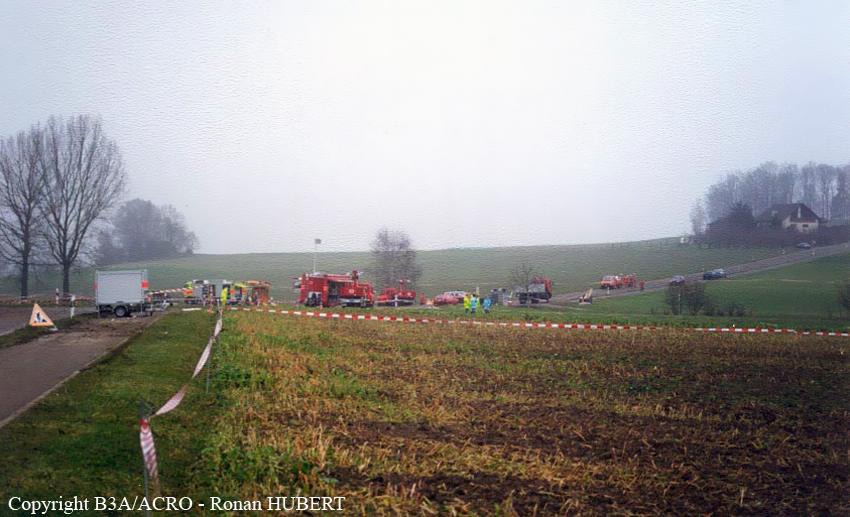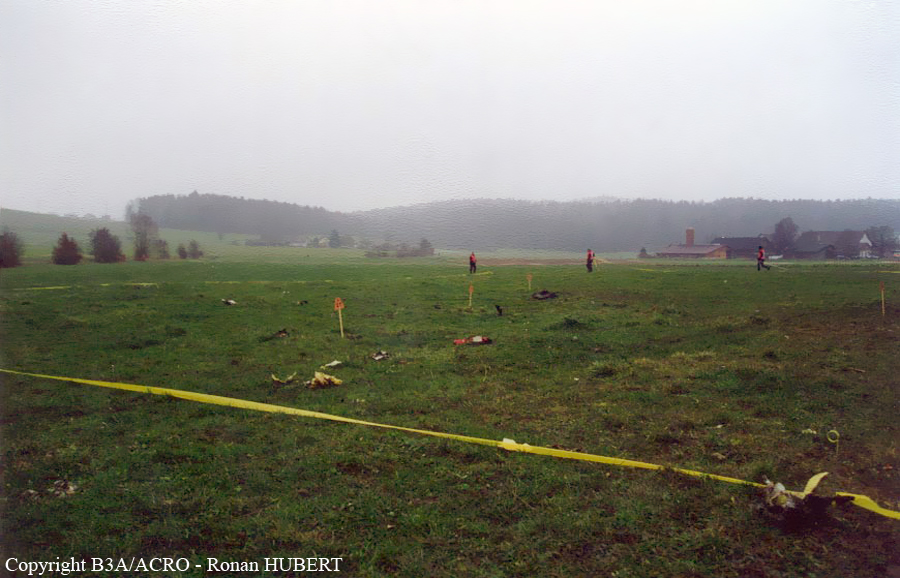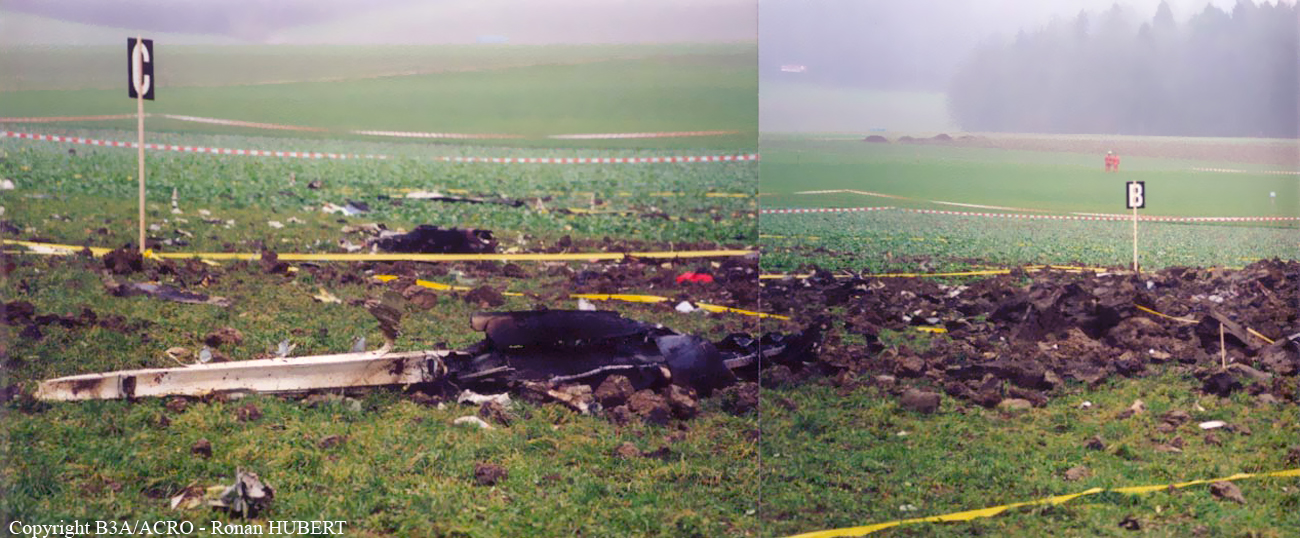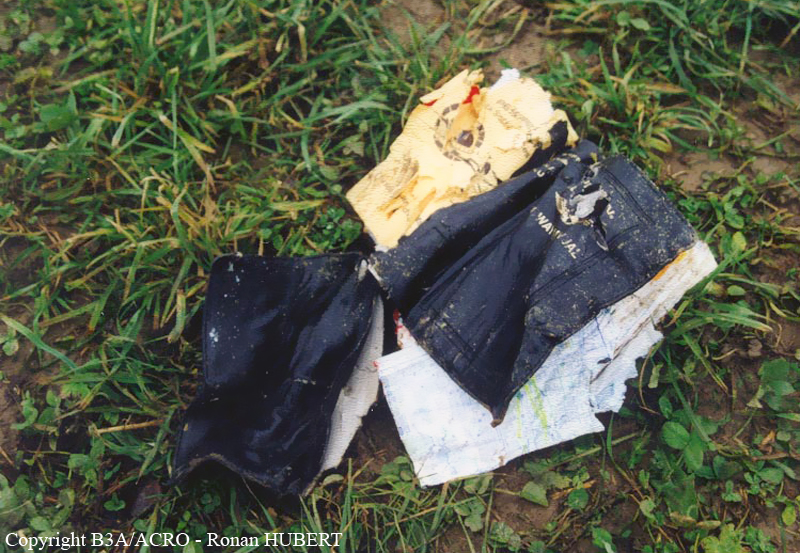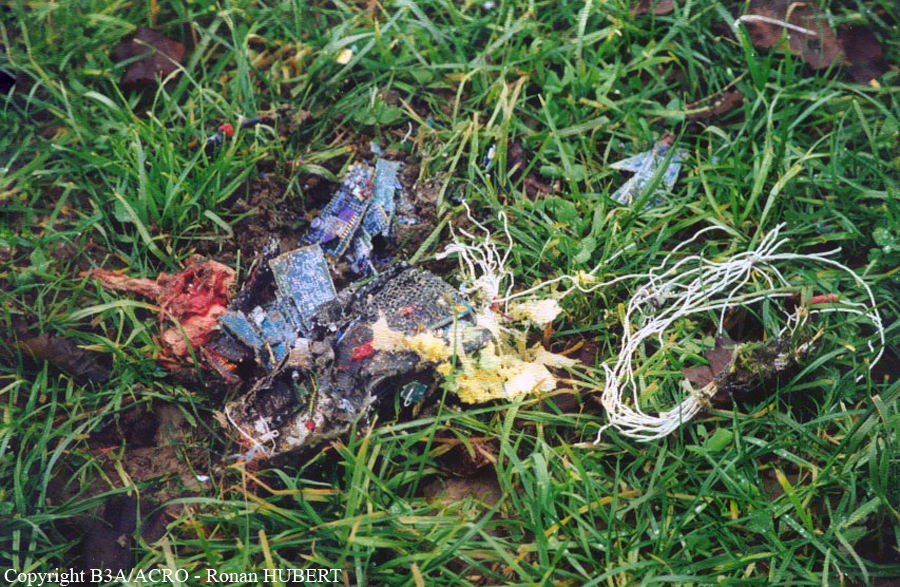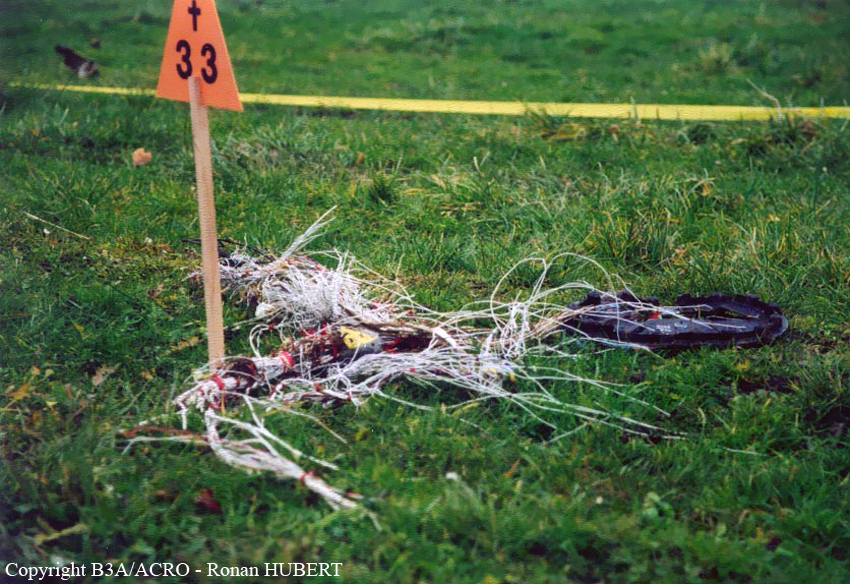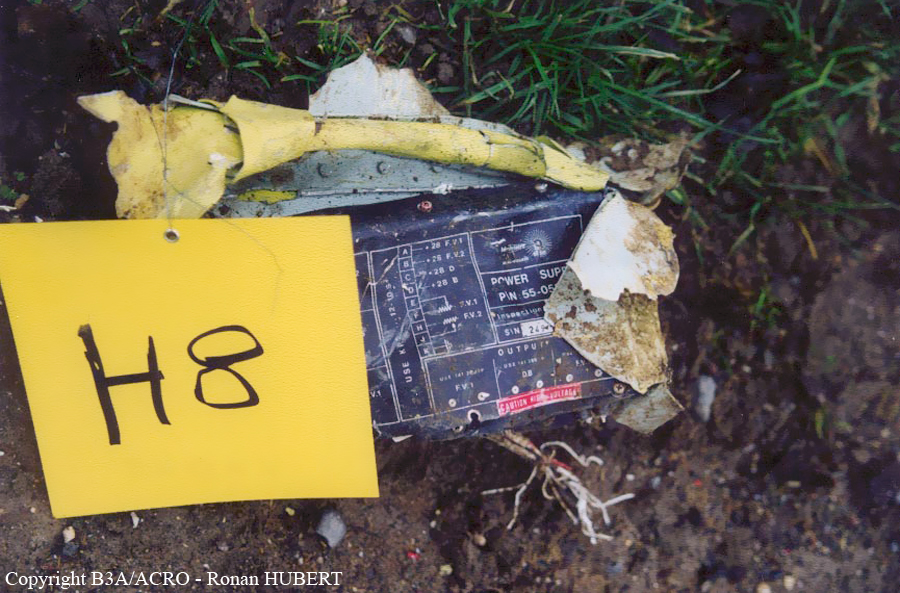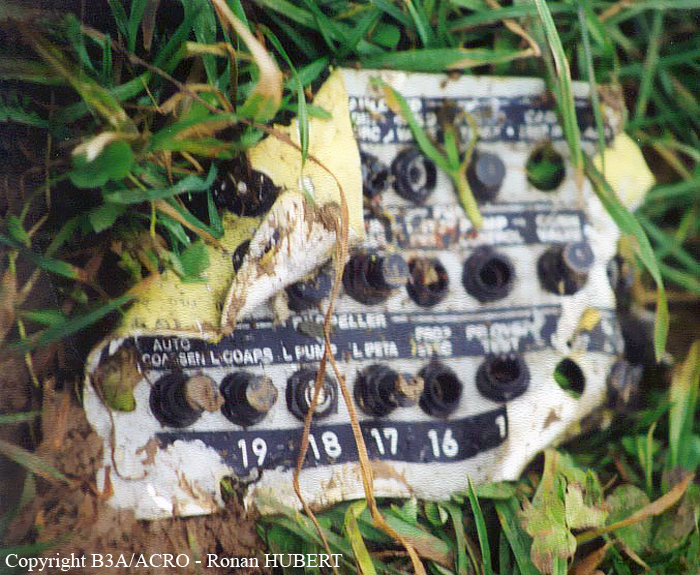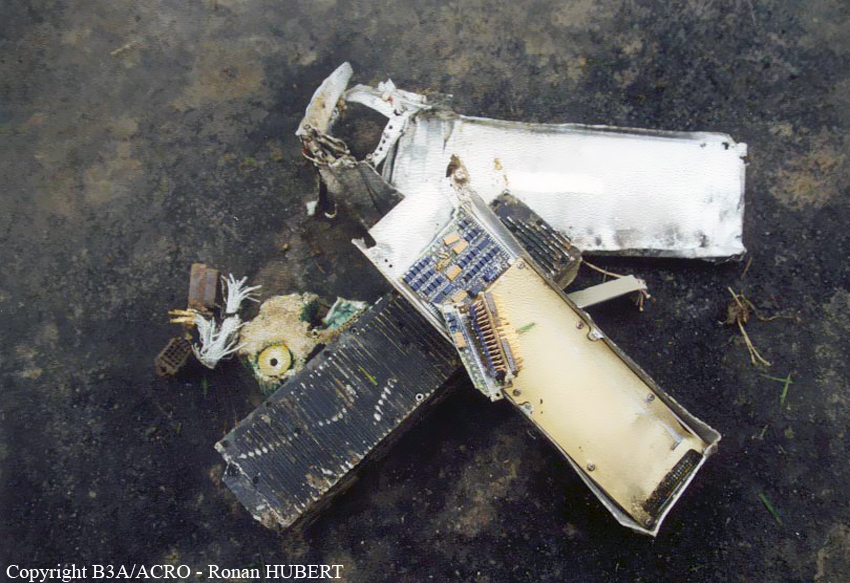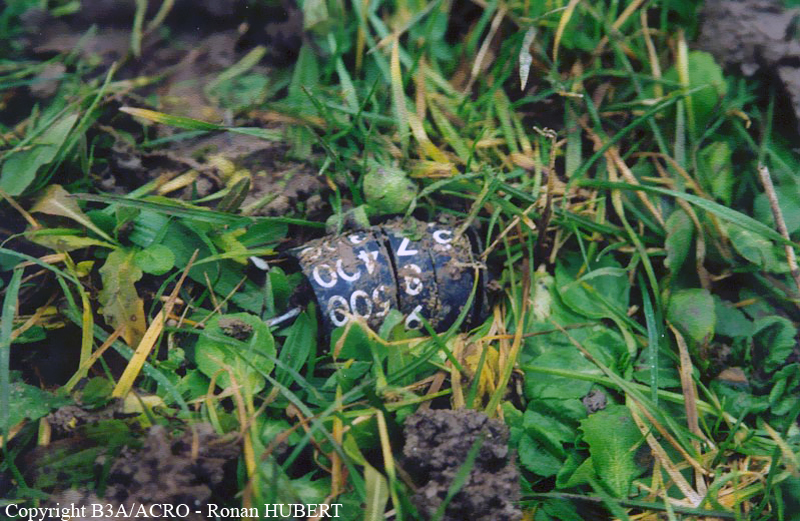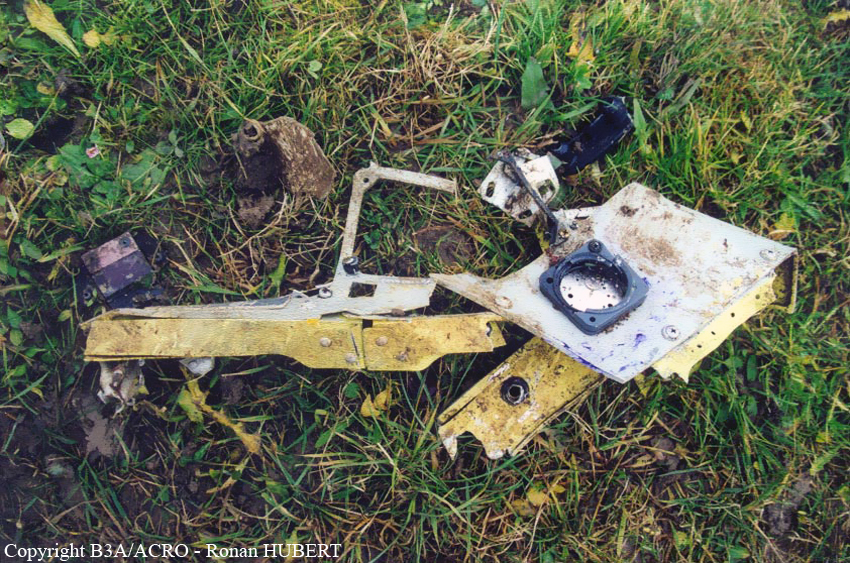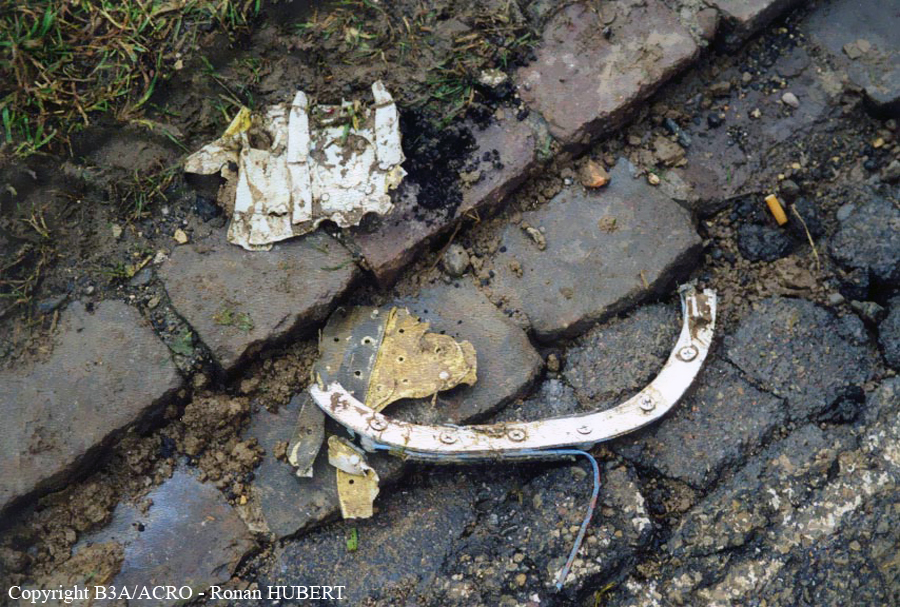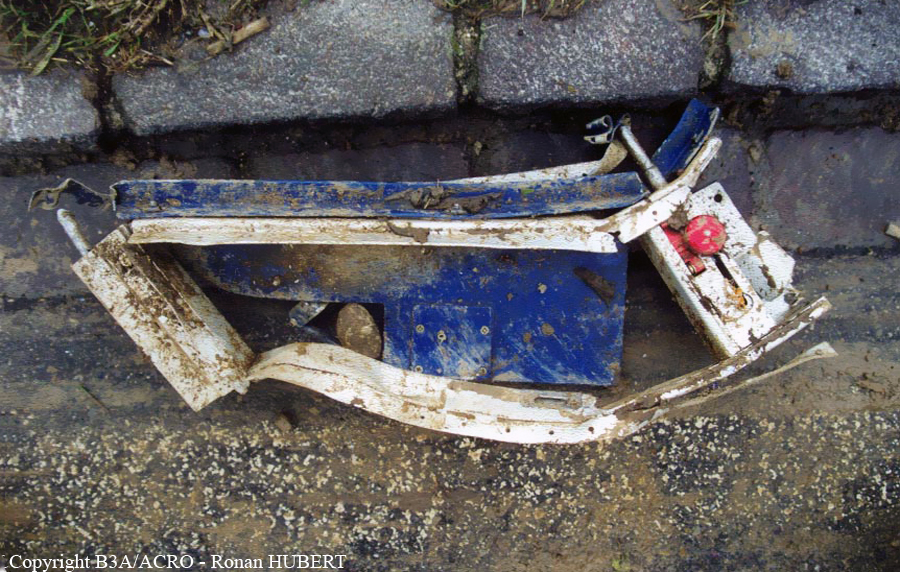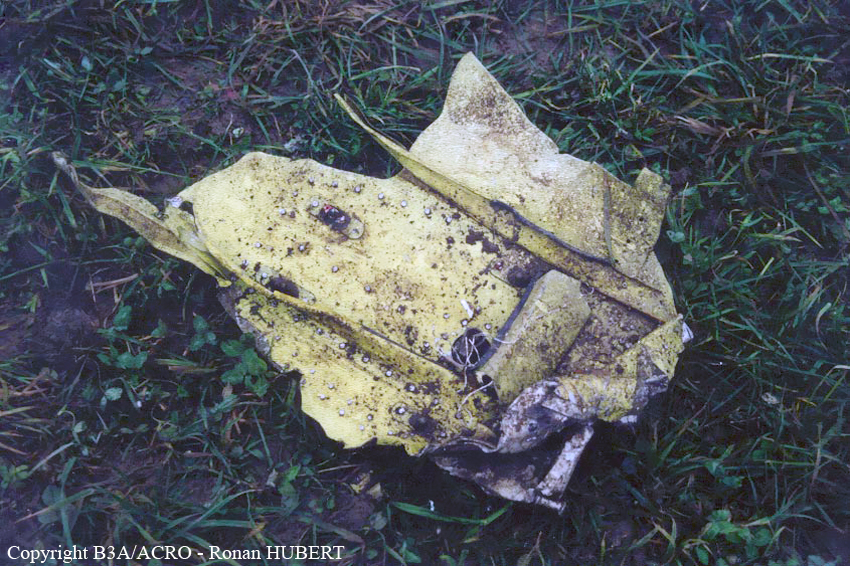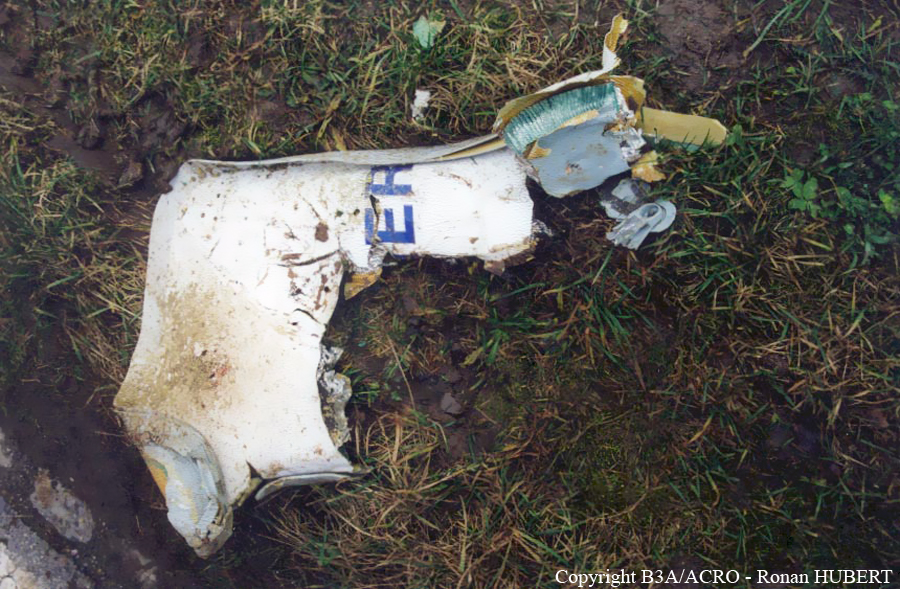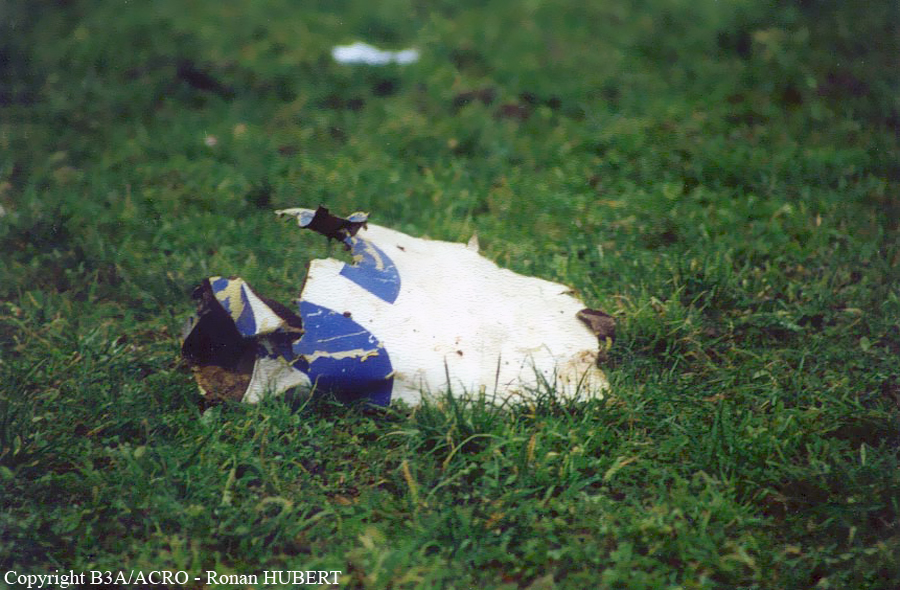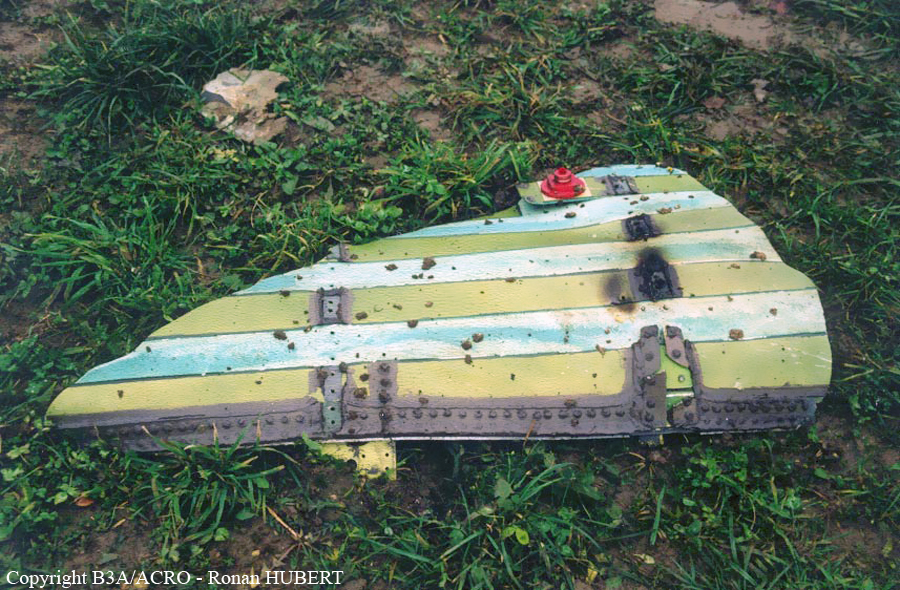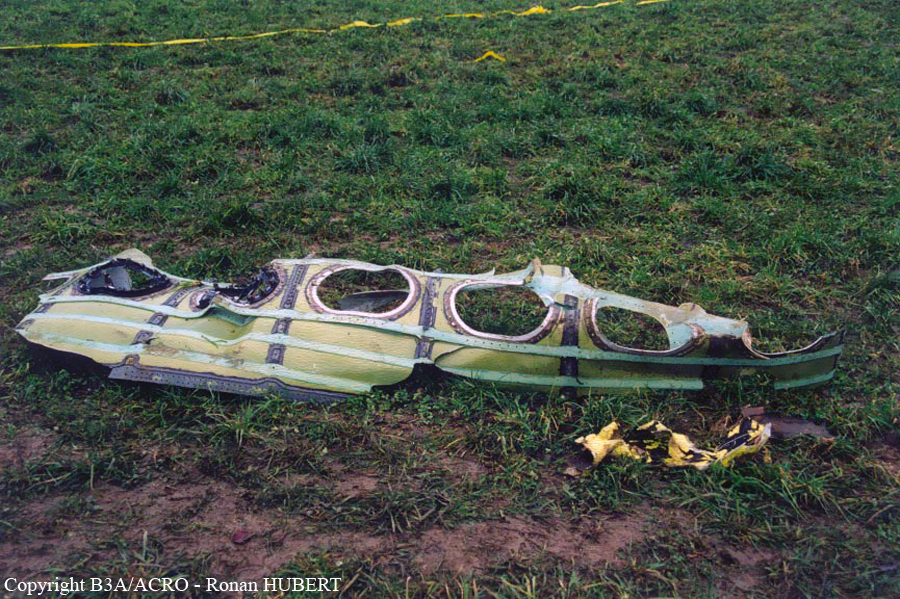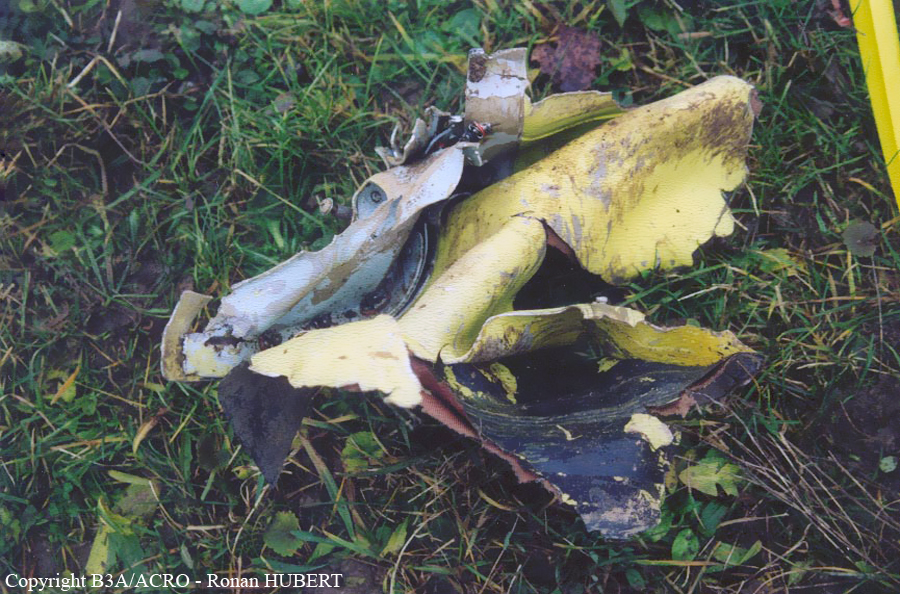Country
Crash of a Saab 340B in Killeen
Date & Time:
Mar 21, 2000 at 1914 LT
Registration:
N353SB
Survivors:
Yes
Schedule:
Dallas - Killeen
MSN:
353
YOM:
1993
Flight number:
AA3789
Crew on board:
3
Crew fatalities:
Pax on board:
33
Pax fatalities:
Other fatalities:
Total fatalities:
0
Captain / Total hours on type:
9251.00
Copilot / Total hours on type:
1040
Aircraft flight hours:
11976
Circumstances:
The captain was the flying pilot for the night landing on runway 01 in instrument meteorological conditions (IMC), with a right cross wind from 110 degrees at 14 gusting 18 knots, drizzle, and a wet runway. Prior to starting the approach, the flightcrew determined that the landing approach speed (Vref) and the approach speed (Vapp) were 122 and 128 knots, respectively. DFDR data showed the airplane flying on autopilot as it passed the middle marker at 200 feet AGL at 130 knots on the ILS approach. Approximately 3 seconds after the first officer called "runway in sight twelve o'clock," the captain disconnected the autopilot, while at a radio altitude of 132 feet and on a heading of approximately 18 degrees. Within approximately 11 seconds after the autopilot disconnect, the glideslope and localizer deviation increased. The first officer called "runway over there." Approximately 5 seconds before touchdown, the airplane rolled right, then left, then right. DFDR data-based performance calculations showed the airplane crossed the threshold at an altitude of 35 feet and 130 knots. The airplane touched down 2,802 feet from the approach end of the 5,495-foot runway (844- foot displaced threshold) at 125 knots on a heading of 10 degrees. The airplane overran the runway and struck a ditch 175 feet beyond the departure end of the runway. Landing roll calculations showed a ground roll of 2,693 feet after touchdown, consisting of 1,016 feet ground roll before braking was initiated and 1,677 feet ground roll after braking was initiated until the airplane exited the pavement. According to Saab, for a wet runway, the aircraft would have needed 1,989 feet from the time of braking initiation to come to a complete stop. The American Eagle Airlines, Inc., FAA approved aircraft operating manual (AOM), states in part: Stabilized approaches are essential when landing on contaminated runways. Landing under adverse weather conditions, the desired touch-down point is still 1,000 feet from the approach end of the runway. Touchdown at the planned point. Cross the threshold at Vapp, then bleed off speed to land approximately Vref -5. Use reverse, if needed. To achieve maximum braking effect on wet runway, apply maximum and steady brake pressure. In 1992, the City of Killeen submitted a proposal that included extending the north end of runway 01 by 194 feet. The FAA originally disapproved the proposal, in part, because the runway extension decreased the length of the runway safety area (RSA) which was already shorter than the recommended 1,000 feet for a 14 CFR Part 139 certificated airport. The proposal was subsequently approved and a drainage ditch was installed in the north RSA, perpendicular to the runway and approximately 175 feet north of the departure end of runway 01. In 1993, the airport received FAA Part 139 certification. The 1998 and 1999, FAA airport certification inspection reports noted the inadequate RSA; however, neither letter of correction, sent from the FAA to the City of Killeen following the inspections, mentioned the RSA. Following this accident, the ILS runway 01 was flight checked by the FAA and all components were found to be operating within prescribed tolerances. Examination of the airplane found no anomalies that would have prevented it from operating per design prior to departing the runway and encountering the ditch.
Probable cause:
The captain's failure to follow standard operating procedure for landing on a contaminated runway in that he touched down long, which combined with his delayed braking resulted in a runway overrun. Contributing factors were the captain's failure to maintain runway alignment following his disconnect of the autopilot, the gusty crosswind and the wet runway. In addition, the following were contributing factors:
(1) the airport operator's failure to fill in a ditch in the runway safety area,
(2) the FAA's granting of 14 CFR Part 139 approval to the airport when the runway safety area (RSA) did not meet the recommended length for a Part 139 airport, and
(3) the FAA's continued lack of acknowledgement to the airport of the inadequate RSA following their annual airport inspection checks.
(1) the airport operator's failure to fill in a ditch in the runway safety area,
(2) the FAA's granting of 14 CFR Part 139 approval to the airport when the runway safety area (RSA) did not meet the recommended length for a Part 139 airport, and
(3) the FAA's continued lack of acknowledgement to the airport of the inadequate RSA following their annual airport inspection checks.
Final Report:

Crash of a Saab 340B in Nassenwil: 10 killed
Date & Time:
Jan 10, 2000 at 1756 LT
Registration:
HB-AKK
Survivors:
No
Schedule:
Zurich - Dresden
MSN:
213
YOM:
1990
Flight number:
LX498
Crew on board:
3
Crew fatalities:
Pax on board:
7
Pax fatalities:
Other fatalities:
Total fatalities:
10
Captain / Total hours on type:
1870.00
Copilot / Total hours on type:
1162
Aircraft flight hours:
21676
Aircraft flight cycles:
20589
Circumstances:
Aircraft HB-AKK had landed in Zurich on 10 January 2000 as Crossair flight CRX 842 from Guernsey and reached stand F74 at 16:00 UTC, which is located near to the threshold of runway 28. The aircraft was then prepared for the next flight at this stand. According to statements from the Swissport ground personnel the preparation of the aircraft took place without any special occurrence. During its time on the ground, the aircraft was supplied with electric power by a ground power unit (GPU). An air-conditioning truck was not used and the aircraft was not de-iced. The crew prepared for the flight using the computer-aided briefing system. The following description of the history of the flight was reconstructed with the help of recordings from the cockpit voice recorder (CVR), digital flight data recorder (DFDR), voice radio communications and ATC radar (cf. Annex 1). According to the available recordings, the commander, as planned by the crew, was pilot flying (PF) and the first officer was pilot non flying (PNF) throughout the flight. At 16:39:14 UTC, flight CRX 498 to Dresden received from clearance delivery (DEL) the following ATC-clearance: "runway two eight, Dresden, Zurich East One Yankee Departure, squawk three zero zero four". The crew was then instructed to change to the apron (APR) frequency. Permission to start engines was given at 16:45:00 UTC by APR. At 16:49:22 UTC the first officer signaled readiness to taxi to APR. While the crew waited for taxi clearance, a few points of the taxi checklist were performed. At 16:50:30 UTC APR cleared flight CRX 498 to follow a Swissair Airbus A320 (SWR 014) to the holding position of runway 28. In accordance with this clearance, CRX 498 started to move. The flight crew performed the outstanding items on the taxi checklist and contacted the tower (TWR), which gave line-up clearance at 16:52:36 UTC. Take-off clearance was given at 16:54:00 UTC: "Crossair four nine eight, wind three zero zero degrees, three knots, cleared take-off runway two eight". According to the automatic terminal information service (ATIS) at 16:50 UTC the following meteorological conditions existed: wind 290° at 2 knots, visibility 6 km in drizzle, broken, cloud base at 500 feet above ground level, temperature 2 °C, dew point 1 °C, QNH 1032 hPa. The aircraft began its take-off roll at 16:54:10 UTC in darkness. The landing lights were on and the flaps were fully retracted. After take-off at 16:54:31 UTC the landing gear was retracted. Then, on the commander's order, the flight director (FD) was switched on and the NAV mode was armed. Both pilots confirmed that the long range navigation system number 1 (LRN 1) was following the track (LRN 1 captured). The commander controlled the aircraft in a stable climb with a pitch of 15° attitude nose up (ANU) and a speed of 136 knots indicated airspeed (KIAS). For the remaining flight, the autopilot was never engaged. Since the cloud base was indicated as 500 ft above ground level (AGL), it can be assumed that the aircraft, once above an altitude of approx. 1900 ft above mean sea level (AMSL) entered instrument meteorological conditions (IMC). The initial flight path, at a heading of 276°, followed the centre line of the runway. After the request from TWR, CRX 498 switched to the departure control frequency (DEP) at 16:55:07 UTC. The radar recording then showed a deviation in the flight path by 5° to the south. However, this slight deviation was reduced before waypoint DME 2.1 KLO was reached by initiating a right turn. At 16:55:15 UTC flight CRX 498 was cleared to climb to flight level 110. At 16:55:39 UTC, Zurich departure issued the instruction to turn to VOR ZUE: "four nine eight, turn left to Zurich East". The first officer confirmed by radio: "turning left to Zurich East, Crossair four niner eight". At the same time the aircraft reached waypoint DME 2.1 KLO. At this point the departure procedure ZUE1Y specifies a left turn, in order to capture and follow radial 255 of VOR KLO. At 16:55:45 the bank angle to the left reached a maximum of 16.9° on a compass heading of 270°. At 16:55:47 UTC the first officer informed the commander that the LRN system was programmed from the present position to ZUE: "from present, LRN is to Zurich East, yeah". The commander confirmed with: "checked". The left turn instruction from DEP was not mentioned. After the aircraft had remained briefly at a 16° bank angle to the left, it began to roll to the right. From 16:55:47 UTC the bank angle rate amounted to 3°/s to the right. In this phase the first officer was very busy carrying out the orders routinely issued by the commander ("CTOT/APR off, yaw damper on, bleed air on"). All relevant flight parameters in this phase indicated a stable climb with a pitch of 13-14° ANU. The communication being conducted internally did not give any indication of difficulties of any kind. At 16:55:55 UTC, at a bank angle of 8.4° to the right, the bank angle rate increased and the nose of the aircraft began to drop from 14.2° to 10.8° ANU. At 16:56:00 UTC the right bank angle attained a value of 31.0°, when the commander gave the order to set climb power: "set climb power". The first officer confirmed with a whispered "coming" and began to set the climb power – a procedure which takes quite some time. Between 16:56:03 UTC and 16:56:10 UTC the commander stabilized the bank angle to the right between 39° and 42° by corresponding flight control inputs. The pitch reduced further and stabilized at a value of 1° ANU at 16:56:06 UTC as a result of corresponding elevator inputs for four seconds. As a consequence, the trajectory reached its maximum altitude of 4720 ft AMSL. According to information from the crew of the preceding flight SWR 014 the cloud top at that time was approx. 5000 ft AMSL. The speed of the aircraft involved in the accident increased to 158 KIAS. 16:56:10 UTC marked the beginning of a nine-second period which was characterized by destabilization of the attitude. It featured uncoordinated deflections of the ailerons to the left and right. Meanwhile, the elevator remained practically in the neutral position. Since the rightward deflections of the aileron were dominant, the bank angle increased from 42° to 80° to the right. Given the neutral position of the elevator, because of the high bank angle the pitch increased to 25° attitude nose down (AND). The aircraft therefore quickly lost altitude and its speed increased to 207 KIAS. At 16:56:12 UTC the first officer made the commander aware that they should turn left to ZUE: "turning left to Zurich East, we should left". At 16:56:15 UTC, at a bank angle of 65.8° to the right, the commander muttered unclearly: "ohna-na". Three seconds later at 16:56:18 UTC, DEP requested confirmation that the aircraft was turning to the left: "Crossair four nine eight, confirm you are turning left". The first officer responded immediately: "moment please, standby". DEP then instructed the crew to continue the right turn: "ok, continue right to Zurich East." In the final phase of flight, beginning at 16:56:20 UTC, the aircraft went into a spiral dive. As a result of massive aileron deflections, the aircraft attained a maximum bank angle of 137° to the right. The engines still provided high power, since setting of climb power had not yet been terminated. At a speed of 250 KIAS the over speed warning horn sounded. At 16:56:24 UTC the first officer vigorously warned the commander to turn left: "turning left, left, left, left... left!" At the end of the data recording at 16:56:25 UTC the aircraft still exhibited a bank angle of 76° to the right. The nose of the aircraft had dropped to 63° AND at an air speed of 285 KIAS. Several witnesses observed the aircraft breaking out of the clouds in a steep descent and performing a right turn. At 16:56:27.2 UTC the aircraft crashed in an open field near Au, Nassenwil, ZH. None of the three crew members and seven passengers survived the impact.
Probable cause:
The accident is attributable to a collision with the ground, after the flight crew had lost control of the aircraft for the following reasons:
• The flight crew reacted inappropriately to the change in departure clearance SID ZUE 1Y by ATC.
• The co-pilot made an entry in the FMS, without being instructed to do so by the commander, which related to the change to the SID ZUE 1 standard instrument departure. In doing so, he omitted to select a turn direction.
• The commander dispensed with use of the autopilot under instrument flight conditions and during the work-intensive climb phase of the flight.
• The commander took the aircraft into a spiral dive to the right because, with a probability bordering on certainty, he had lost spatial orientation.
• The first officer took only inadequate measures to prevent or recover from the spiral dive.
The following factors may have contributed to the accident:
• The commander remained unilaterally firm in perceptions which suggested a left turn direction to him.
• When interpreting the attitude display instruments under stress, the commander resorted to a reaction pattern (heuristics) which he had learned earlier.
• The commander’s capacity for analysis and critical assessment of the situation were possibly limited as a result of the effects of medication.
• After the change to standard instrument departure SID ZUE 1Y the crew set inappropriate priorities for their tasks and their concentration remained one-sided.
• The commander was not systematically acquainted by Crossair with the specific features of western systems and cockpit procedures.
• The flight crew reacted inappropriately to the change in departure clearance SID ZUE 1Y by ATC.
• The co-pilot made an entry in the FMS, without being instructed to do so by the commander, which related to the change to the SID ZUE 1 standard instrument departure. In doing so, he omitted to select a turn direction.
• The commander dispensed with use of the autopilot under instrument flight conditions and during the work-intensive climb phase of the flight.
• The commander took the aircraft into a spiral dive to the right because, with a probability bordering on certainty, he had lost spatial orientation.
• The first officer took only inadequate measures to prevent or recover from the spiral dive.
The following factors may have contributed to the accident:
• The commander remained unilaterally firm in perceptions which suggested a left turn direction to him.
• When interpreting the attitude display instruments under stress, the commander resorted to a reaction pattern (heuristics) which he had learned earlier.
• The commander’s capacity for analysis and critical assessment of the situation were possibly limited as a result of the effects of medication.
• After the change to standard instrument departure SID ZUE 1Y the crew set inappropriate priorities for their tasks and their concentration remained one-sided.
• The commander was not systematically acquainted by Crossair with the specific features of western systems and cockpit procedures.
Final Report:

